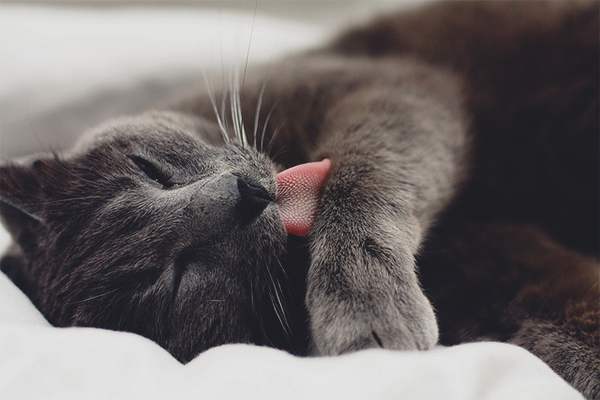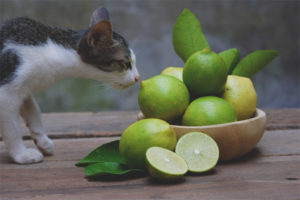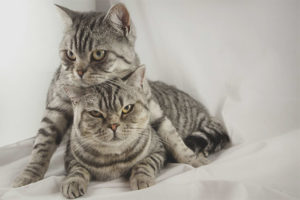The content of the article
Nature is designed so that the cat's stomach is able to digest anything - branches, bones, mouse skin, feathers of birds. But in modern conditions, when the cat does not get food on its own, but eats adapted food, the stomach becomes capricious and tender. And the cat is faced with such a problem as the inability of self-removal of hair from the stomach.
Wool enters the stomach is quite simple. The cat licks its fur when washing, some of the hairs remain on the tongue, after which it invariably swallows them. Sometimes in the stomach can accumulate large clumps of wool, which lead to big problems. The cat may even die of indigestion and obstruction of the stomach. This means that you need to regularly help your pet get rid of hairballs in the stomach and intestines. It is necessary to pay special attention to this question during the period of molting, when the amount of wool increases several times. Most often, long-haired cat breeds suffer from fur in the stomach.
How to understand that a cat has a lump in the stomach
- A ball of wool in the stomach gives an imaginary feeling of satiety. It often happens that the cat goes to the bowl, eats a little and immediately leaves, that is, the portions of food consumption become much smaller. This is a reason to look at the pet. At the same time, digestion is disturbed, and constipation appears in the animal, as shreds of wool prevent the cat from emptying its intestines. If a cat does not have a chair for a long time, most likely it has a piece of wool stuck in its digestive tract.
- About the presence of a ball of wool can be said in appearance of the cat. Since the animal does not receive the necessary vitamins and minerals from food, the fur becomes dull and tough.
- Another sign of accumulation of wool in the stomach is the frequent urge to vomit. The cat wants to belch, but it does not work. This usually happens after a meal or throughout the day.
- Inspect your pet's fangs. If wool accumulates on them, it means that there is also a lot of it in the stomach. By the way, the hairs can grow into the gums, which contributes to inflammation. You need to regularly clean the animal's canines from foreign objects.
- With all these symptoms, the cat completely changes in mood.She becomes apathetic, lethargic, sleeps a lot, often hides. If you notice that something is wrong with the animal, you need to urgently help him. Moreover, today for removing wool from the stomach there are many effective ways.
How to get rid of wool in the cat's stomach
It is absolutely natural that the cat's hair can come out in two ways - with the help of vomiting or with feces. All funds are directed to a particular solution to the problem. We will talk about the most effective ways to save the cat from the lump in the digestive system.
- Walk in the open air. The fact is that the cat is able to heal itself. She eats special types of plants that can cause her to vomit. If you live in an apartment, the cat cannot satisfy its needs. Go to the cottage, in the garden or on the garden and let your pet take a walk in the grass. He will find healing for himself.
- Grass grown. If you do not have the opportunity to go into nature, you can grow such grass at home, right in the conditions of a city apartment. Veterinary stores sell seeds of a special herb that causes vomiting in cats. Plant them in a pot and put them on the windowsill.As soon as the seeds begin to germinate, the cat itself will begin to feast on the proposed treat and will be very grateful to you. If there is no time to grow, you can also buy a pot with already sprouted sprouts.
- Specialized feed. These are tools that will help you remove wool from your stomach and intestines in a natural way. On sale there is feed, which are designed to remove hair with feces. They contain a sufficient amount of oil, which envelops the walls of the stomach and intestines, after which it carefully removes even the largest ball of wool. It is not necessary to feed the pet with such feed all the time, only during the molting period or once a month for prevention. Usually such food is to the liking of cats.
- Phytomines for wool forcing. To remove the hairball from the intestine, you can use phytomines. This is an excellent drug that copes with intestinal obstruction. It removes not only wool, but also stuck pieces of paper, bones and other foreign objects. It is based on a collection of various medicinal herbs useful for digestion.
- Pillows with vegetable oils. On sale there are special treats for the most fastidious cats.They are pads, inside which are special flavored oils. Cats eat these pads with pleasure - still, they can be tasteful chicken, beef, fish. Oils gently envelop the stomach walls and remove the hair ball with feces.
- Paste. In pet stores or veterinary pharmacies, you can find a special paste that is mixed with the main food. It has a pleasant taste and smell, so that most pets do not refuse it.
- Vaseline. If it is far to veterinary pharmacies and shops, and you want to help the animal now, you can use simple petroleum jelly. Buy pure petroleum jelly in a pharmacy and pour about one teaspoon into the animal's throat with a syringe without a needle. This will help lubricate the stomach with greasy grease and the wool will come out without much effort.
Remember that you are responsible for those who have tamed. After all, animals are like children, they cannot tell about their symptoms and are completely dependent on you. Even if the pet does not present any external signs of the formation of wool in the stomach, carry out preventive measures to cleanse the cat's digestive tract. And regularly brush your wool,so that as little hairs get into your pet's stomach. Take care of your pet and do not forget to take care of him!




 4 votes, on average: 4,75 out of 5
4 votes, on average: 4,75 out of 5







To send